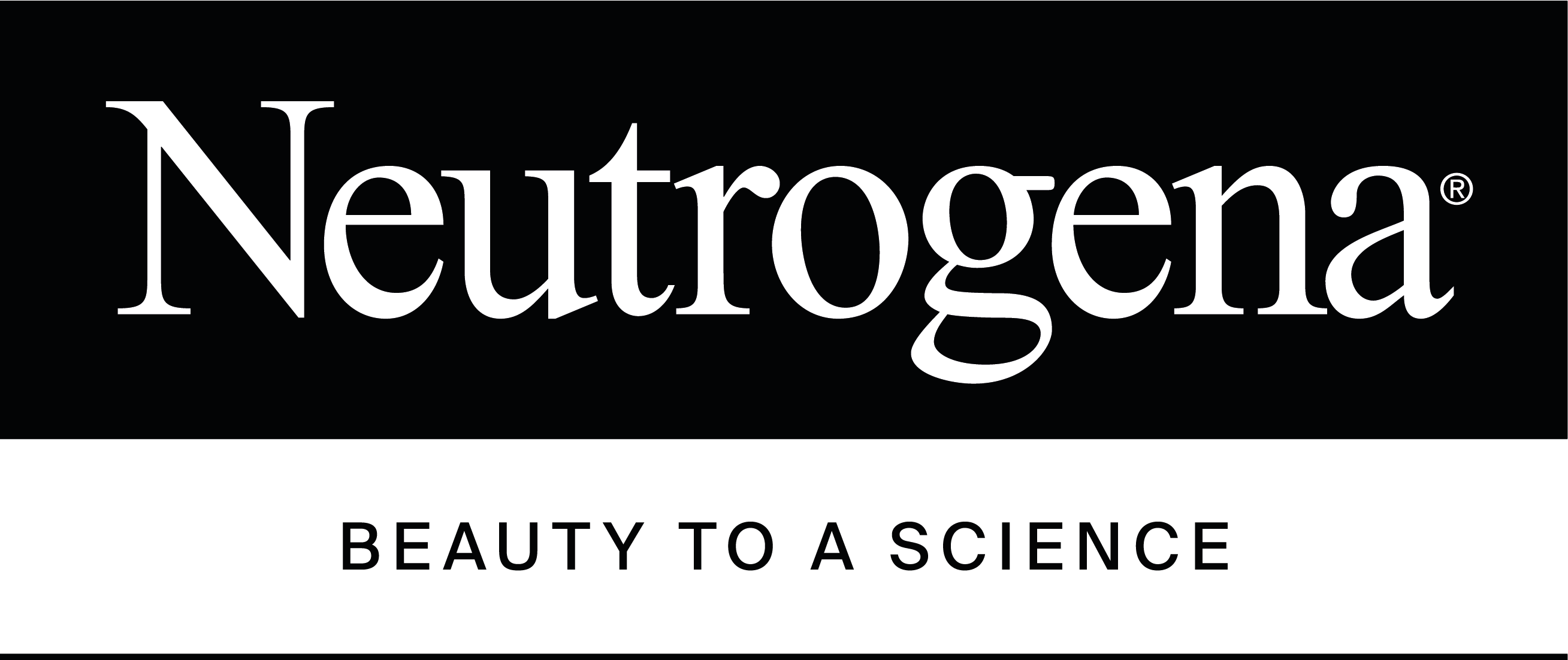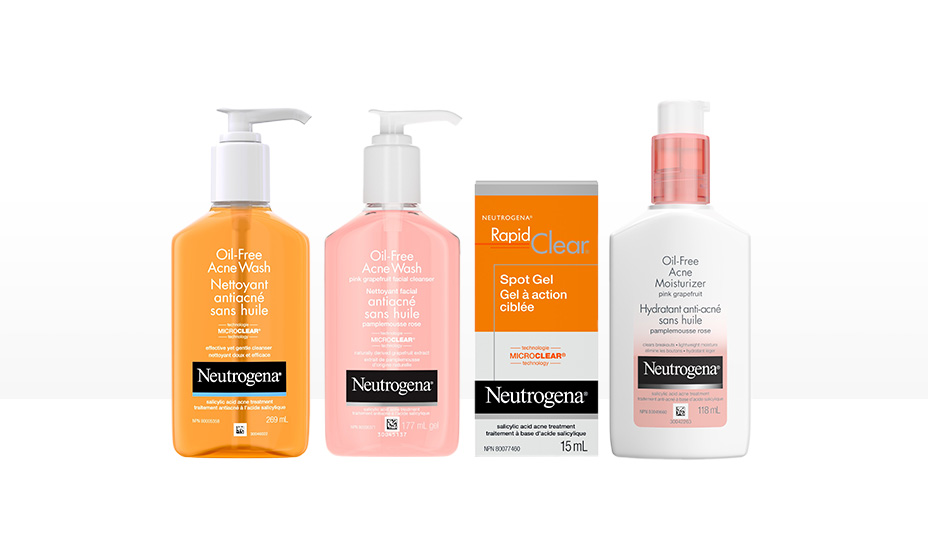Breakouts tend to happen at the worst times—cropping up right before picture day, a special event, or a big date. And while acne is extremely common within teenagers, it can sometimes remain a problem throughout adulthood and linger into your 40s and 50s1. If you are struggling with skin problems, finding a skincare routine that works best for you is a step in the right direction.
Keep reading to learn more about acne, acne causes, and the topical treatments available that may help to eliminate breakouts.
What is Acne?
Acne, or Acne Vulgaris, is a common skin condition that causes whiteheads, blackheads, and pimples. It can be categorized as mild, moderate, or severe. Acne can occur at any point in life but is most active during puberty and teenage years. For most people, the struggle with acne decreases with age and breakouts tend to clear up by itself over time. While acne occurs most commonly on the face, it can also pop up in areas such as the neck, chest, back, or shoulders, as these surfaces tend to have the most oil (sebaceous) glands2. Although acne is not dangerous, it can leave scars and it can affect one’s self-esteem3 but there are a variety of treatments available for acne skin conditions.
What Causes Acne?
Sebum is a natural oily substance that the skin produces to stay hydrated and protected. But it can also trap sweat and dust. When hair follicles under the skin become clogged with sebum and other particles, your pores become irritated with the growth of bacteria. These micro infections are called whiteheads, blackheads or pimples, and are responsible for the discoloration and bumps on the skin4.
However, sebum is not the only culprit that causes acne. There are many factors that can increase the likelihood of a breakout3, including:
Bacteria-prone items near your skin (like a pillowcase, dirty towel, or touching your face with unwashed hands)
Drying or harsh facial products that lead to the overproduction of sebum
Excess sebum from not washing the face regularly
Trapped sweat (facial masks, headbands, and hats)
Hair products that clog pores (most likely to cause acne on the back, chest or scalp)
Sun (or tanning beds) drying out your face
Harsh winds or very dry weather
Smoke from cigarettes or campfires
Dehydration (not drinking enough water)
Hormone shifts (including monthly cycles, puberty, and pregnancy)
Food (especially irritating foods, intolerances, and sugary foods)
Stress, which increases oil production
Allergies that cause excess irritation, inflammation, and an increase in oil production
Neutrogena can help improve acne-prone skin. The high-quality facial line at Neutrogena uses salicylic acid as a key ingredient to combat clogged pores and reduce acne.
What is Salicylic Acid?
Salicylic acid is one of the most common beta-hydroxy acids (BHAs) that occurs as a natural compound in plants. Because of its anti-inflammatory and anti-bacterial nature, salicylic acid is used within skincare to promote exfoliation (keratolytic agent), and to remove bacteria, particles, and sebum5.
How does Salicylic Acid Work
Salicylic acid dissolves in fat. When applied to the skin, it penetrates the opening of oil glands to break down fatty compounds (sebum) and unclog pores. As salicylic acid is a mild exfoliant, it does not damage the protective layers of a skin or rupture blood vessels, unlike physical exfoliation6.
Salicylic acid works by softening the top layer of the skin (epidermis) to remove dead skin cells and debris.
How to Use Salicylic Acid
Salicylic acid can be found in most OTC products such as face creams, spot treatment, cleansing pads, face soap, and toners. The application dosage depends on each product, but OTC products contain 0.5-2% salicylic acid8. Take care to avoid getting any product in your eyes, nose, or mouth.
Use the treatment as directed by your doctor, dermatologist, or as specified on the drug label.
If you are a first-time user, begin in small amounts. Apply the salicylic acid to one or two small affected areas for 3 days. If no irritation or discomfort occurs, continue with use and follow the instructions on the drug label9. Your skin may need time to adapt, so it is important to control the frequency of your topical application when you first start.
What Neutrogena Products with Salicylic Acid are great for Acne-Prone Skin?
Neutrogena provides a variety of products that contain salicylic acid for targeting common skin concerns such as acne and blackheads, or simply as a day-to-day skincare for keeping your complexion clear. The following products are great to start with as Neutrogena uses 0.5-2% salicylic acid as the medicinal ingredient:
NEUTROGENA RAPID CLEAR® Spot Gel: Ideal for reducing pimple size and redness within four hours
NEUTROGENA® Oil-Free Acne Wash Pink Grapefruit Facial Cleanser: This cleanser fights and helps prevent breakouts, even blackheads, with 2% Salicylic Acid acne medicine and oil-blasting MICROCLEAR® technology.
NEUTROGENA Oil-Free Acne Moisturizer: Combat oily and acne-prone skin without clogging pores. This lightweight lotion is non-greasy and provides .5% salicylic acid to help keep acne at bay.
NEUTROGENA BODY CLEAR® Body Wash Pink Grapefruit: Struggling with body acne? This all-over, acne-fighting body wash will help clean out the pores and treat the skin.
NEUTROGENA OIL-FREE ACNE STREE CONTROL® Power-Cream Wash: A creamy face wash with skin-soothing ingredients, such as green tea and cucumber extract, and 2% salicylic acid to help prevent acne before it starts.
Form a Good Skincare Routine
It is important to get into the habit of taking care of your skin, so forming a consistent skincare routine is key. Once you’ve found a Neutrogena product that works best for you, stick with it! Although it can be stressful to wait while your acne clears, remember that great skin takes time. Continue monitoring and keeping up with your skin care routine. More importantly, be patient - it may take several weeks of consistent product use before you see any noticeable difference.
Making simple and healthy changes in your lifestyle, and being mindful of activities that provoke acne, will help keep those pores clean. As you start to realize what triggers your skin, you will get better at avoiding them altogether. Over time, the frequency of acne breakouts should reduce greatly.
We always recommend consulting your dermatologist or physician for a full diagnosis and treatment plan.
Sources:
https://www.mayoclinic.org/diseases-conditions/acne/symptoms-causes/syc-20368047
https://www.medicalnewstoday.com/articles/107146#home_remedies
https://www.mayoclinic.org/diseases-conditions/acne/symptoms-causes/syc-20368047#
https://www.mdacne.com/article/what-does-salicylic-acid-do-for-acne
https://www.mayoclinic.org/drugs-supplements/salicylic-acid-topical-route/proper-use/drg-20066030

